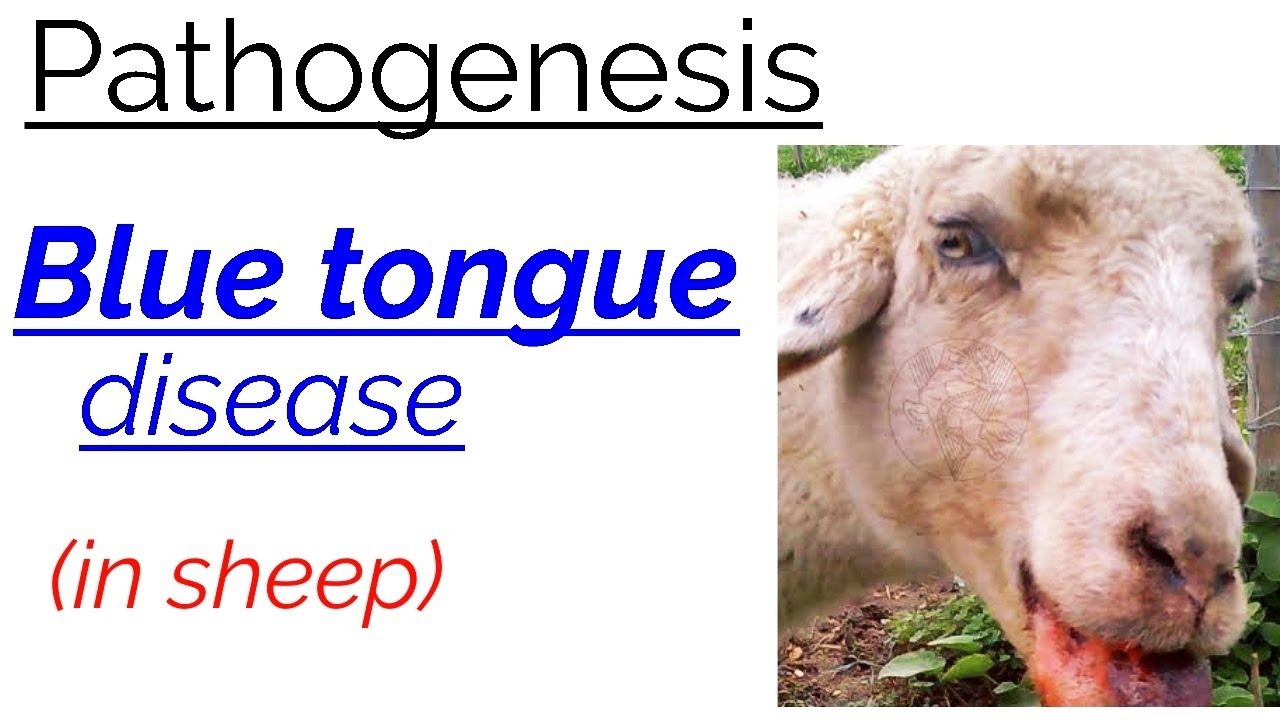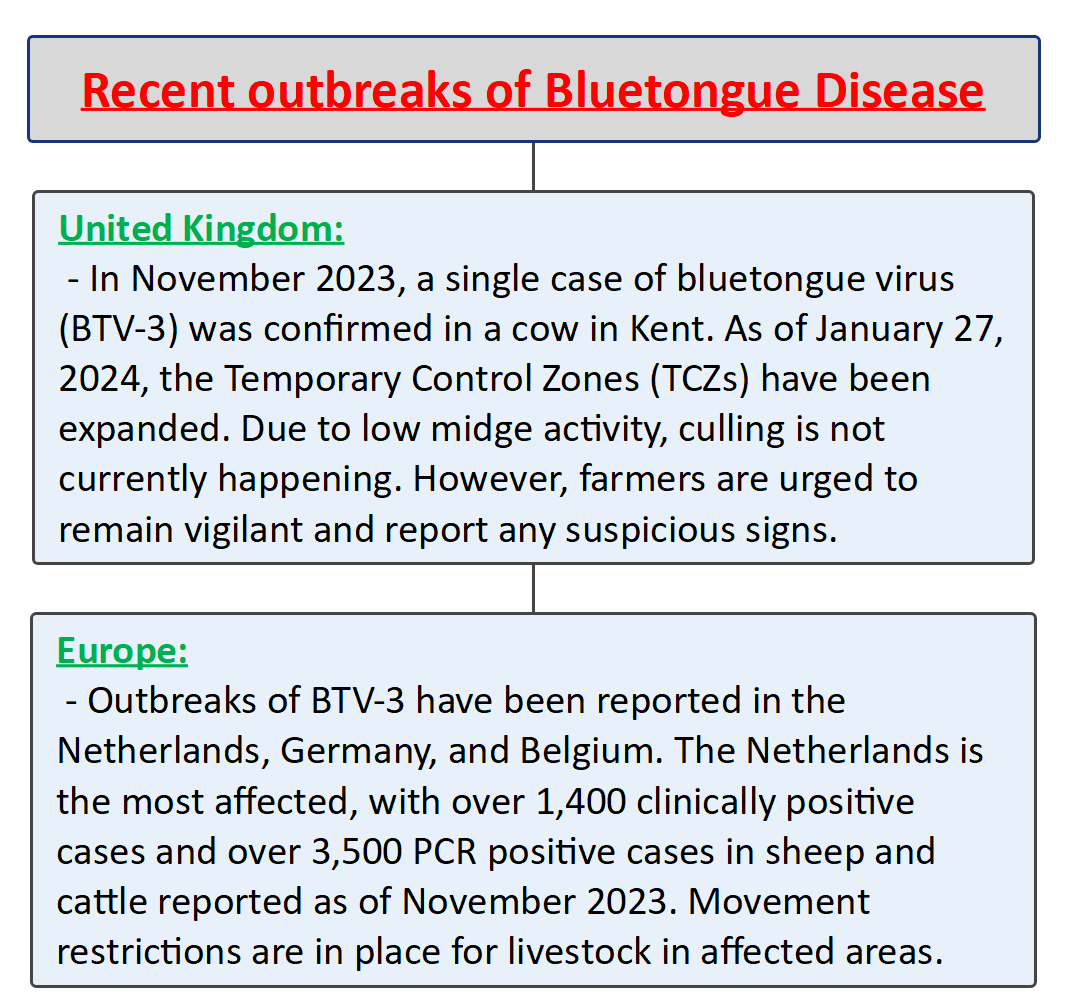Free Courses Sale ends Soon, Get It Now


Free Courses Sale ends Soon, Get It Now



Copyright infringement not intended
Picture Courtesy: https://www.youtube.com/watch?v=PctyUk9LmfE&ab_channel=Dr.RiteshVerma-Vet.Mate
Context: China has implemented import bans on ruminants and their related products from Iraq, Belgium, and the Netherlands due to outbreaks of bluetongue disease in these countries.
About Bluetongue Disease
Transmission and Spread
Clinical Signs
Diagnostic Methods
Impact on Livestock
Control and Prevention
Global Distribution

|
PRACTICE QUESTION Q. What is the primary vector responsible for transmitting the Bluetongue virus? A) Mosquitoes B) Ticks C) Biting Midges D) Fleas Answer: C Explanation: Bluetongue virus (BTV) is primarily transmitted by biting midges, specifically those belonging to the genus Culicoides. These small insects, commonly known as Culicoides midges or sandflies, play a crucial role in the transmission cycle of the virus. When infected midges feed on the blood of a viremic (infected) host, they can acquire the virus. Subsequently, these infected midges can transmit the virus to susceptible animals during their subsequent blood meals. The virus does not spread directly from one infected animal to another or through contact with contaminated materials. Instead, Culicoides midges act as biological vectors, contributing to the spread of the Bluetongue virus among ruminant populations. Vector control measures, such as insecticide use and environmental management to reduce breeding sites for Culicoides, are often important components of strategies to control and prevent the disease. |
© 2024 iasgyan. All right reserved